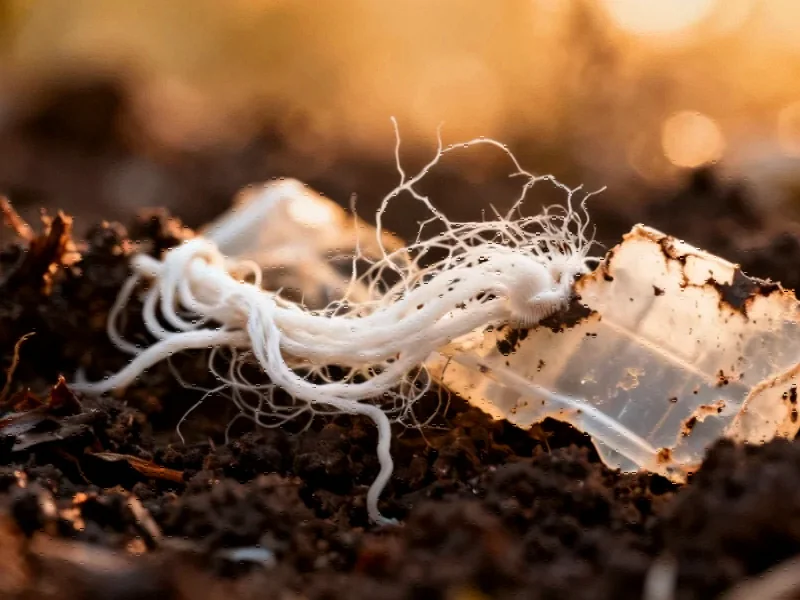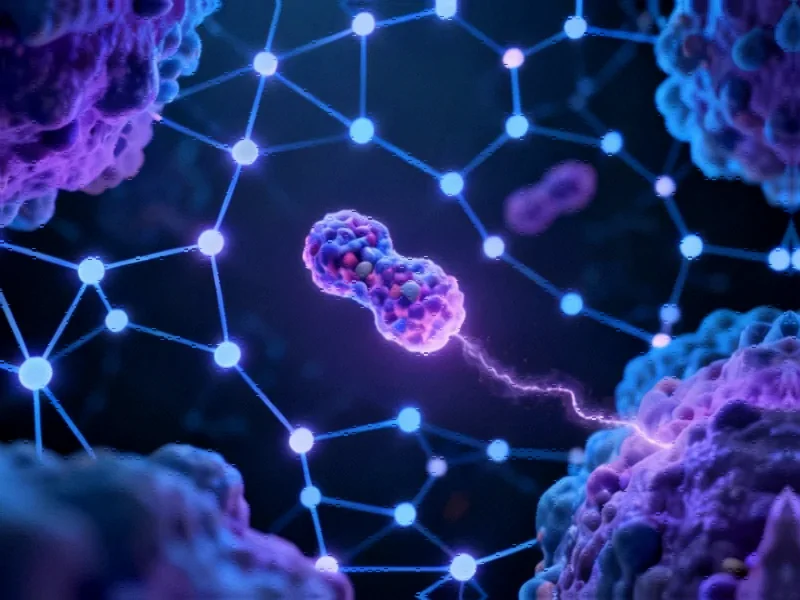The Biodegradable Plastic Problem
While biodegradable plastics like PBAT (polybutylene adipate terephthalate) have been marketed as sustainable alternatives to conventional plastics, their actual decomposition in natural environments often falls short of expectations. In typical soil or composting conditions, these materials can persist for months or even years, creating a significant waste management challenge that undermines their environmental benefits.
A Fungal Solution from Taiwanese Farmland
Researchers from National Taiwan University have made a breakthrough discovery using a common soil fungus called Purpureocillium lilacinum strain BA1S. Originally isolated from Taiwanese farmland by PhD student Wei-Sung Tseng, this fungus demonstrates remarkable plastic-degrading capabilities when combined with specific environmental conditions. The research team, led by Professor Chi-Te Liu, took an innovative approach by enhancing the fungus’s natural abilities rather than resorting to genetic modification or expensive chemical treatments.
This discovery represents one of many related innovations in sustainable materials science that are transforming how we approach environmental challenges.
The Calcium and pH Synergy
The researchers discovered that two simple factors—mildly alkaline conditions (pH 7.5) and the presence of calcium ions—dramatically accelerated the degradation process. Under these optimized conditions, the fungal treatment achieved over 55% weight loss in PBAT plastic films within just two weeks, a significant improvement over natural decomposition rates.
Professor Chi-Te Liu, the study’s corresponding author, emphasized the importance of their findings: “By showing that a simple adjustment in pH and calcium availability can activate a fungus’s full degradation potential, our work opens new possibilities for greener waste management and circular-economy applications.”
Mechanisms Behind Enhanced Degradation
Using advanced analytical techniques including microscopy and spectroscopy, the research team confirmed that the fungal treatment caused substantial surface erosion and chemical changes to the plastic material. Further investigation through transcriptomic and gene-network analyses revealed fascinating metabolic shifts within the fungal cells.
The researchers observed that genes related to biosurfactant production, membrane transport, and protein degradation became highly activated, while those responsible for basic energy metabolism were downregulated. This indicates the fungus was redirecting its metabolic resources specifically toward breaking down and absorbing plastic fragments.
These biological mechanisms represent important industry developments in our understanding of microbial plastic degradation.
Calcium’s Role in Enzyme Stability
Perhaps the most significant finding was calcium’s effect on a key degrading enzyme called PlCut, a cutinase produced by the fungus. Biochemical tests demonstrated that calcium ions not only promoted enzyme secretion but also enhanced the enzyme’s thermal stability and reduced thermal inactivation. This dual effect allows the enzyme to remain active longer and work more efficiently against the plastic polymer.
This enzymatic stabilization approach aligns with other recent technology advances that leverage natural biological processes for environmental benefit.
Implications for Waste Management
The research demonstrates that fine-tuning environmental conditions—rather than employing complex genetic engineering or expensive chemical additives—can significantly enhance plastic biodegradation in soil and composting systems. This approach offers a simple, low-cost, and sustainable method for improving waste management practices, particularly in agricultural settings where plastic mulch films create substantial environmental challenges.
As we monitor these market trends in sustainable technology, it’s clear that nature-based solutions are gaining prominence in addressing plastic pollution.
Broader Environmental Applications
This research opens new possibilities for managing biodegradable plastic waste from both agricultural and packaging sources. By optimizing natural degradation processes through careful environmental management, we can develop more effective composting systems and soil remediation strategies. The approach could be particularly valuable in agricultural regions where plastic accumulation has become a significant concern.
The study, published in the Journal of Hazardous Materials, contributes to a growing body of research exploring natural solutions to plastic pollution. As regulatory scrutiny increases around environmental claims, such as those highlighted in the UK competition watchdog’s actions, scientifically validated approaches to biodegradation become increasingly important.
This biological approach to materials breakdown represents an exciting convergence with other scientific frontiers, including the exploration of quantum materials phenomena that could eventually inform new degradation mechanisms. Similarly, advances in quantum sensing technology may eventually provide more precise monitoring of biodegradation processes in environmental systems.
Even technical challenges in other fields, such as the Windows recovery environment issues, remind us that solving complex problems often requires understanding system interactions—whether in computing or environmental science.
For those interested in tracking this research area more closely, the comprehensive monitoring of soil fungus applications in biodegradable plastic management provides ongoing insights into this rapidly evolving field.
Future Directions
The research team’s findings pave the way for developing optimized composting systems that leverage these natural degradation enhancers. Future work will likely focus on scaling up the process for industrial applications and exploring combinations with other natural degradation accelerants. As biodegradable plastics continue to replace conventional materials in various applications, such biological enhancement strategies will become increasingly valuable components of circular economy systems.
This article aggregates information from publicly available sources. All trademarks and copyrights belong to their respective owners.
Note: Featured image is for illustrative purposes only and does not represent any specific product, service, or entity mentioned in this article.



